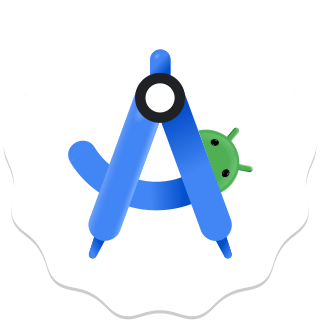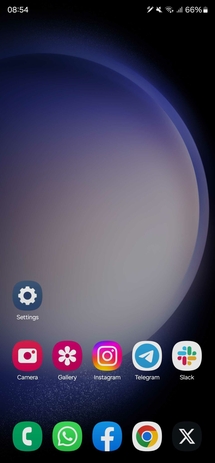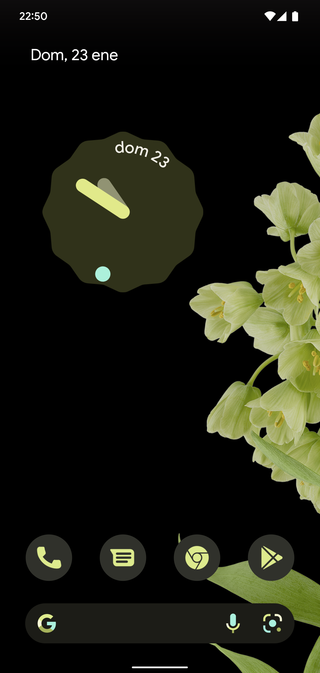
Android 13 is the thirteenth major release and the 20th version of Android, the mobile operating system developed by the Open Handset Alliance led by Google. It was released to the public and the Android Open Source Project (AOSP) on August 15, 2022. The first devices to ship with Android 13 were the Pixel 7 and 7 Pro.
The version history of the Android mobile operating system began with the public release of its first beta on November 5, 2007. The first commercial version, Android 1.0, was released on September 23, 2008. The operating system is developed by Google on a yearly cycle since at least 2011. New major releases are announced at Google I/O along with its first public beta to supported Google Pixel devices. The stable version is then released later in the year.
This is a comparison of mobile operating systems. Only the latest versions are shown in the table below, even though older versions may still be marketed.

Android Studio is the official integrated development environment (IDE) for Google's Android operating system, built on JetBrains' IntelliJ IDEA software and designed specifically for Android development. It is available for download on Windows, macOS and Linux based operating systems. It is a replacement for the Eclipse Android Development Tools (E-ADT) as the primary IDE for native Android application development. Android Studio is licensed under the Apache license but it ships with some SDK updates that are under a non-free license, making it not open source.

Wear OS is a version of Google's Android operating system designed for smartwatches and other wearables. By pairing with mobile phones running Android version 6.0 "Marshmallow" or newer, or iOS version 10.0 or newer with limited support from Google's pairing application, Wear OS integrates Google Assistant technology and mobile notifications into a smartwatch form factor. Wear OS is closed-source, in contrast to the free and open-source Android.
Google TalkBack is an accessibility service for the Android operating system that helps blind and visually impaired users to interact with their devices. It uses spoken words, vibration and other audible feedback to allow the user to know what is happening on the screen allowing the user to better interact with their device. The service is pre-installed on many Android devices, and it became part of the Android Accessibility Suite in 2017. According to the Google Play Store, the Android Accessibility Suite has been downloaded over five billion times, including devices that have the suite preinstalled.

Android Nougat is the seventh major version and 14th original version of the Android operating system. First released as an alpha test version on March 9, 2016, it was officially released on August 22, 2016, with Nexus devices being the first to receive the update. The LG V20 was the first smartphone released with Nougat in 2016.

Samsung Internet Browser is a desktop and mobile web browser developed by Samsung Electronics, based on the open-source Chromium project. It comes pre-installed on Samsung Galaxy devices and, since 2015, has been available for download from Google Play for all Android devices.
Flutter is an open-source UI software development kit created by Google. It can be used to develop cross platform applications from a single codebase for the web, Fuchsia, Android, iOS, Linux, macOS, and Windows. First described in 2015, Flutter was released in May 2017. Flutter is used internally by Google in apps such as Google Pay and Google Earth as well as by other software developers including ByteDance and Alibaba.

Android Pie, also known as Android 9 is the ninth major release and the 16th version of the Android mobile operating system. It was first released as a developer preview on March 7, 2018, and was released publicly on August 6, 2018.

One UI is a user interface (UI) developed by Samsung Electronics for its Android devices running Android 9 "Pie" and later. Succeeding Samsung Experience and TouchWiz, it is designed to make using larger smartphones easier and be more visually appealing. To provide more clarity, some elements of the UI are tweaked to match colors that are based on the color of the user's phone. It was announced at Samsung Developer Conference in 2018, and was unveiled in Galaxy Unpacked in February 2019 alongside the Galaxy S10 series, Galaxy Buds and the Galaxy Fold.

Android 10 is the tenth major release and the 17th version of the Android mobile operating system. It was first released as a developer preview on March 13, 2019, and was released publicly on September 3, 2019.

HarmonyOS (HMOS) is a distributed operating system developed by Huawei for smartphones, tablets, smart TVs, smart watches, personal computers and other smart devices. It has a multi-kernel design with dual frameworks: the operating system selects suitable kernels from the abstraction layer in the case of devices that use diverse resources. The operating system was officially launched by Huawei in August 2019.

Android 11 is the eleventh major release and 18th version of Android, the mobile operating system developed by the Open Handset Alliance led by Google. It was released on September 8, 2020. The first phone launched in Europe with Android 11 was the Vivo X51 5G and after its full stable release, the first phone in the world which came with Android 11 was Google Pixel 5.

Live Transcribe is a smartphone application to get realtime captions developed by Google for the Android operating system. Development on the application began in partnership with Gallaudet University. It was publicly released as a free beta for Android 5.0+ on the Google Play Store on February 4, 2019. As of early 2023 it had been downloaded over 500 million times. The app can be installed from an .apk file by sideloading and it will launch, but the actual transcription functionality is disabled, requiring creation of an account with Google.

Android 12 is the twelfth major release and 19th version of Android, the mobile operating system developed by the Open Handset Alliance led by Google. The first beta was released on May 18, 2021. Android 12 was released publicly on October 4, 2021, through Android Open Source Project (AOSP) and was released to supported Google Pixel devices on October 19, 2021. As of April 2024, it is the oldest Android version still supported.
The version history of the HarmonyOS distributed operating system began with the public release of the HarmonyOS 1.0 for Honor Vision smart TVs on August 9, 2019. The first expanded commercial version of the Embedded, IoT AI, Edge computing based operating system, HarmonyOS 2.0, was released on June 2, 2021, for phones, tablets, smartwatches, smart speakers, routers, and internet of things. Beforehand, DevEco Studio, the HarmonyOS app development IDE, was released in September 2020 together with the HarmonyOS 2.0 Beta. HarmonyOS is developed by Huawei. New major releases are announced at the Huawei Developers Conference (HDC) in the fourth quarter of each year together with the first public beta version of the operating system's next major version. The next major stable version is then released in the third to fourth quarter of the following year.
Android 14 is the fourteenth major release and the 21st version of Android, the mobile operating system developed by the Open Handset Alliance led by Google. It was released to the public and the Android Open Source Project (AOSP) on October 4, 2023. The first devices to ship with Android 14 were the Pixel 8 and Pixel 8 Pro.

Good Lock (Korean: 굿락) is a software suite to tweak and customize the user interface and experience on Samsung Galaxy devices. It is developed by Good Lock Labs in cooperation with Samsung, and can be downloaded from the Galaxy Store and more recently, the Google Play Store.

PixelExperience is an open-sourced custom ROM, or Android distribution, based on the stock Android AOSP that aimed to provide a bloat-free, stock-android, Pixel-like experience to a wide range of Android devices. The project, initiated by a community of developers in 2017, focused on delivering a clean, minimalistic, and visually appealing user interface reminiscent of Google's Pixel devices. Pixel Experience was designed to be as close to stock Android as possible, with a focus on reliability, security, stability, performance, battery life, and useful customizations.











